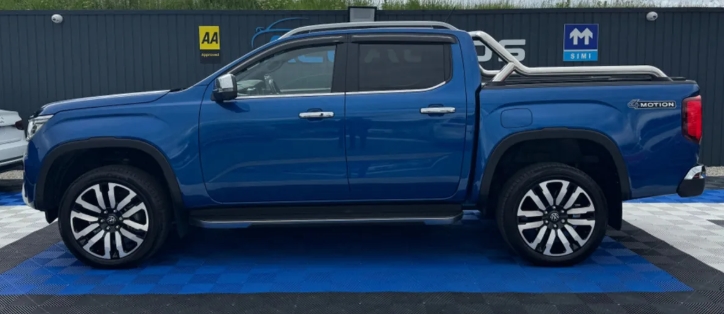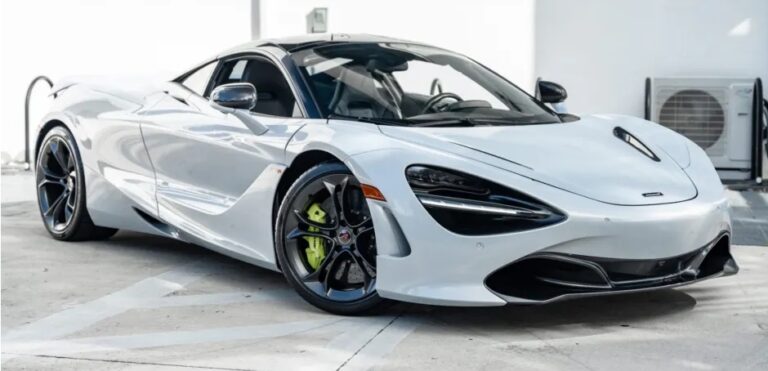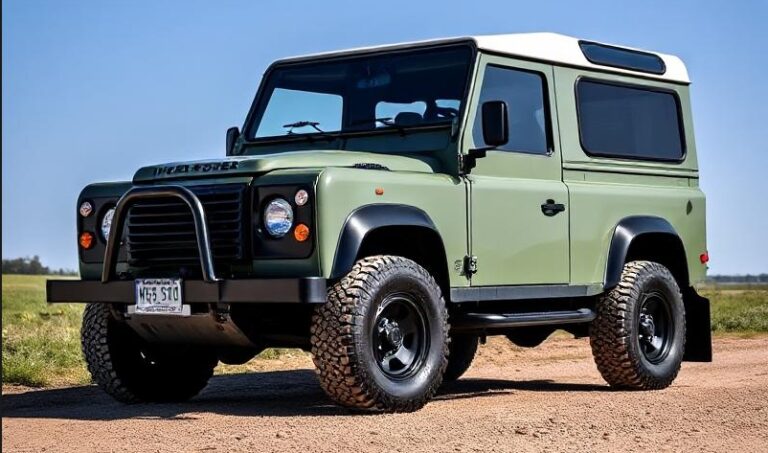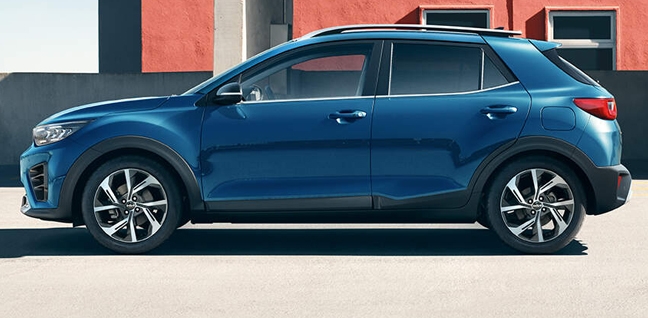The Wolf of the Worksite: A Comprehensive Evolution of the Volkswagen Amarok
In the unforgiving world of pickup trucks, a segment long dominated by Japanese stalwarts and American titans, the arrival of a new contender from a German brand renowned for its people’s cars was a bold and calculated gamble. When Volkswagen unveiled the Amarok, it wasn’t just launching a new vehicle; it was declaring its intention to redefine the very concept of a one-ton utility vehicle. Named after the Inuit word for “wolf,” the Amarok was designed to be a clever, powerful, and adaptable creature, equally at home on a rugged worksite as it was cruising on the motorway. Its evolution from a plucky upstart to a respected segment leader is a story of engineering prowess, strategic adaptation, and a relentless pursuit of the premium utility niche.
Genesis: The First Generation (2010 – 2022)
The journey of the Amarok began long before its public debut. Previewed by the Volkswagen Robust Pick-Up concept in 2008, the production model was officially launched in late 2009 for the 2010 model year. Critically, Volkswagen chose General Pacheco, Argentina, as its global production hub, signaling a serious assault on the South American market, a pickup truck heartland.
From the outset, the Amarok’s unique selling proposition was its car-like refinement. While competitors often prioritized raw, agricultural toughness, Volkswagen leveraged its expertise in passenger vehicles to create a pickup with superior on-road manners, a comfortable cabin, and a level of interior fit and finish previously unseen in the segment.
Initial Phase (2010 – 2012): The Four-Cylinder Era
Upon its launch, the Amarok was available exclusively as a double cab. The powertrain was a point of much discussion: a relatively small-displacement 2.0-litre twin-turbodiesel (BiTDI) engine. This was a courageous move in a market where engine size was often equated with capability. This engine, however, produced a healthy 120 kW (161 hp) and 400 Nm of torque, proving that intelligent engineering could rival brute force. A lower-powered, single-turbo 2.0-litre TDI with 90 kW (121 hp) was also offered.
Drivetrain options were a key highlight, offering a configuration for every need:
Rear-wheel drive (4×2): For fleet and on-road applications.
Selectable 4MOTION (Part-time 4×4): A traditional system with a transfer case for engaging the front axle and a low-range gear for serious off-roading.
Permanent 4MOTION (Full-time 4×4): Using a Torsen differential, this system provided exceptional on-road stability in all conditions, a feature more common in premium SUVs than pickups.
The initial trim levels established a clear hierarchy:
Amarok (Base): A no-frills workhorse featuring 16-inch steel wheels, unpainted bumpers, and a basic interior. It was purely about utility.
Trendline: Added creature comforts such as body-colored bumpers, air conditioning, power windows, and an upgraded audio system. It was the sensible middle ground.
Highline: The top-tier model, boasting 17-inch alloy wheels, chrome exterior accents, automatic climate control, premium upholstery, and a more sophisticated infotainment system.
In 2011, Volkswagen expanded the range with the introduction of the Single Cab model, catering directly to the commercial and agricultural sectors with its longer load bed. A significant milestone arrived in 2012 with the introduction of a class-leading ZF 8-speed automatic transmission. Paired exclusively with the permanent 4MOTION system and a slightly uprated BiTDI engine (132 kW/177 hp), this combination cemented the Amarok’s reputation as the most refined and car-like pickup to drive.
Mid-Life Enhancements and Special Editions (2013 – 2016)
Throughout the middle of its first generation, Volkswagen kept the Amarok fresh with minor updates and a series of appealing special editions. BlueMotion technology was introduced to improve fuel efficiency, and the engine outputs saw minor tweaks. Special editions like the Amarok Canyon (2014) in its vibrant ‘Copper Orange’ paint, with a roof light bar and unique interior trim, and the stealthy Amarok Dark Label (2015), with its blacked-out styling elements, added significant showroom appeal and catered to lifestyle buyers.
The Game-Changer: The V6 Facelift (2016 – 2022)
By 2016, the only lingering criticism of the Amarok was that its 2.0-litre engine, while competent, lacked the effortless grunt of the larger six-cylinder engines offered by some rivals. Volkswagen’s response was not just an answer, but a statement of dominance. The 2016 facelift introduced a seismic shift under the bonnet: a 3.0-litre V6 TDI engine, sourced from the Audi portfolio (part of the EA897 engine family).
This engine transformed the Amarok from a capable pickup into a performance powerhouse. It was offered in multiple states of tune, initially with 120 kW, 150 kW, and a headline-grabbing 165 kW (221 hp) version that produced a colossal 550 Nm of torque. An overboost function could temporarily push power to 180 kW. This V6 was exclusively paired with the 8-speed automatic transmission and permanent 4MOTION, creating the ultimate “autobahn-ready” pickup.
The facelift also included significant cosmetic and interior upgrades. A new front bumper and grille aligned it more closely with Volkswagen’s passenger car lineup, while the interior received a complete dashboard redesign, featuring higher-quality materials and the latest infotainment systems.
The trim hierarchy was updated to reflect this new premium positioning:
Startline/Trendline/Highline: These trims continued, now available with both the remaining 2.0L TDI and the new V6 engines.
Aventura: A new flagship model was introduced, sitting above Highline. The Aventura was a luxury statement, featuring 20-inch alloy wheels, a body-colored sports bar, bi-xenon headlights, and Nappa leather upholstery.
As the generation neared its end, Volkswagen pushed the V6 even further. A final power upgrade delivered a staggering 190 kW (255 hp) and 580 Nm of torque (hence the “Amarok 580” moniker in some markets), cementing its status as the most powerful pickup in its class. In 2020, production in Argentina ceased for many global markets, though it continued for South America, marking the end of an era for the pioneering first generation.
A New Alliance: The Second Generation (2022 – Present)
The future of the Amarok was secured through an unlikely source: a global alliance with Ford. Under a partnership known as “Project Cyclone,” Volkswagen and Ford agreed to co-develop their next-generation mid-size pickups. The new Amarok would be based on the critically acclaimed platform of the new Ford Ranger, a move that drew both excitement for its proven capability and concern from purists about the dilution of Volkswagen’s unique DNA.
Unveiled in 2022 and built alongside the Ranger in Silverton, South Africa, the second-generation Amarok immediately put those fears to rest. While sharing its core ladder-frame chassis, suspension architecture, and drivetrain components with the Ranger, Volkswagen invested heavily in creating a distinct product.
Design, Powertrain, and Technology
The exterior design is unmistakably Volkswagen, particularly at the front, with a clean, horizontal grille and optional IQ.Light matrix LED headlights that integrate seamlessly. The distinctive wheel arches and “AMAROK” stamped across the tailgate give it a unique and muscular identity. It is also significantly larger than its predecessor, improving both cabin space and load capacity.
The interior is where the Volkswagen DNA shines brightest. While the Ford-sourced 10- or 12-inch portrait-style touchscreen is the centrepiece, the surrounding dashboard, digital cockpit, steering wheel, and switchgear are all unique to Volkswagen, featuring premium materials and a sophisticated, driver-focused layout that feels a step above its competitors.
The engine lineup is now a mix of Ford powerplants, tailored for global markets:
2.0L TDI (Single-Turbo): Available in 110 kW or 125 kW outputs, serving as the workhorse base engine.
2.0L BiTDI (Twin-Turbo): A versatile mid-range option producing 150 kW or 154 kW.
3.0L V6 TDI: The flagship diesel, a Ford-developed V6 (distinct from the previous Audi unit) producing a potent 177 kW (237 hp) and 600 Nm of torque.
2.3L TSI (EcoBoost): A 222 kW (298 hp) turbocharged petrol engine offered in select markets, targeting lifestyle buyers.
Transmission options include a 6-speed manual, 6-speed automatic, and a sophisticated 10-speed automatic for the higher-output models. The 4MOTION all-wheel-drive systems also return, with a selectable part-time system for lower trims and a more advanced full-time system on the top-tier models.
.

.
The Modern Trim Structure
Volkswagen introduced a new naming convention for the second generation, shifting the focus towards lifestyle applications:
Amarok: The entry-level commercial-focused model.
Life: The all-rounder, equivalent to the previous Trendline, with more standard features and alloy wheels.
Style: A premium-oriented model, replacing Highline, featuring larger wheels, more chrome, and a high-end interior.
PanAmericana: A new top-tier trim focused on rugged, off-road luxury. It comes standard with the V6, all-terrain tires, blacked-out styling, and enhanced underbody protection.
Aventura: The second top-tier trim, positioned as the ultimate on-road, luxury pickup. It features 21-inch alloy wheels, extensive chrome detailing, a premium leather interior, and a focus on sophisticated style.
From its ambitious beginnings as a refined alternative in a rugged market, the Volkswagen Amarok has evolved into a two-generation success story. The first generation courageously carved out a niche with its car-like handling and game-changing V6 engine. The second generation, born from a strategic alliance, has elevated the nameplate further, blending the proven, world-class capability of the Ford Ranger platform with Volkswagen’s undeniable flair for premium design, technology, and interior refinement. The wolf has not only survived in a fiercely competitive pack but has evolved to become one of its clear and undisputed leaders.







